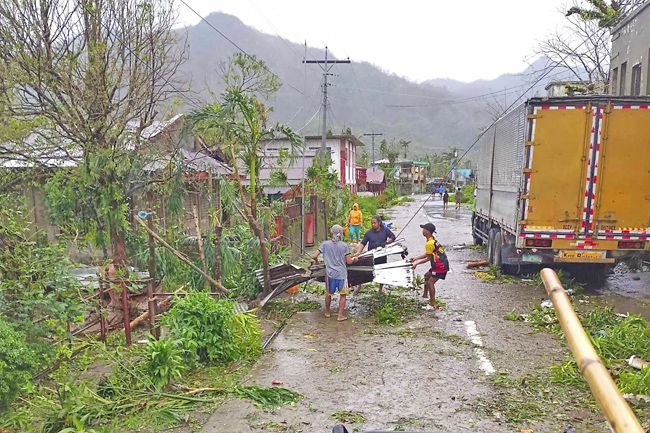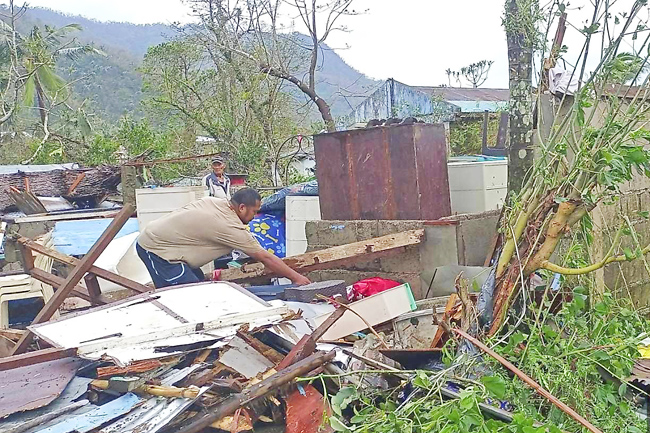MANILA (AFP) – Super Typhoon Man-yi slammed into the Philippines’ most populous island yesterday, with the national weather service warning of flooding, landslides and huge waves as the storm sweeps across the archipelago nation.
Man-yi was still packing maximum sustained winds of 185 kilometres per hour after making its first landfall late on Saturday on lightly populated Catanduanes island.
More than 1.2 million people fled their homes ahead of Man-yi as the weather forecaster warned of a “life-threatening” impact from the powerful storm, which follows an unusual streak of violent weather.
Man-yi uprooted trees, brought down power lines and smashed flimsy houses to pieces after hitting Catanduanes in the typhoon-prone Bicol region.
No deaths have been reported, but there was “extensive” damage to structures on Catanduanes, civil defence chief Ariel Nepomuceno said.
Man-yi remained a super typhoon as it hit heavily populated Luzon – the country’s economic engine – forecasters said, warning of a “potentially dangerous” situation in Aurora province. “Significant weakening” was expected as it traversed the mountainous island, the weather service said. But it said severe flooding and landslides were expected as Man-yi dumped “intense to torrential” rain over provinces in its path.
Forecasters also warned storm surges of up to more than three metres could swamp vulnerable coastal communities, including in Manila.
Panganiban municipality in the northeast of Catanduanes took a direct hit from Man-yi.
Photos and a drone video shared on the Facebook page of Mayor Cesar Robles showed fallen power lines, damaged and destroyed buildings, and trees and corrugated iron sheets strewn on the roads.
“Pepito was so strong, I have never experienced a typhoon this strong,” Robles said in a post, using the local name for Man-yi, as clean-up efforts got underway and people returned home.
“It is still a bit unsafe, there are still bursts of wind and there are many debris.”
Mother-of-three Marissa Cueva Alejandro, 36, who grew up in Catanduanes and sheltered with a relative during Man-yi, said typhoons were getting stronger.
“Before, we would only experience (typhoon) signal number three to four, but now typhoons are getting as strong as signal number five,” she said, referring to the weather service’s five-tiered wind warning system.
Man-yi is the sixth storm in the past month to batter the archipelago nation. At least 163 people died in the previous storms, that also left thousands homeless and wiped out crops and livestock.
Climate change is increasing the intensity of storms, leading to heavier rains, flash floods and stronger gusts.
About 20 big storms and typhoons hit the Southeast Asian nation or its surrounding waters each year, killing scores of people, but it is rare for multiple such weather events to take place in a small window. The weather forecaster has hoisted its highest and second-highest typhoon signals over a wide band of provinces stretching from Luzon’s east coast, where Man-yi made its second landfall, across to the western side of the island where it will exit.







